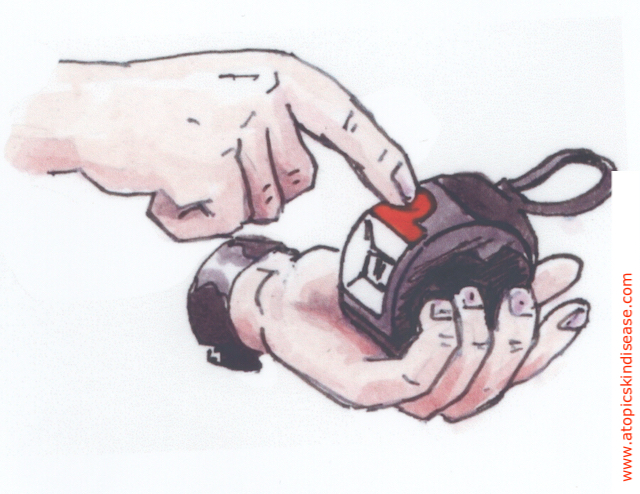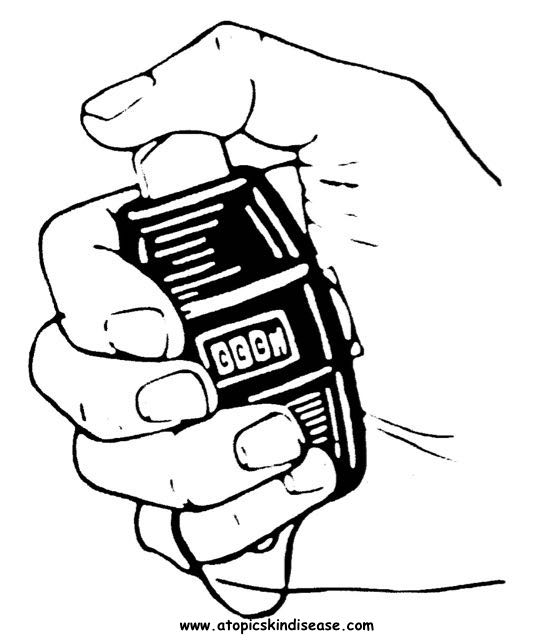Success with Habit Reversal: "It's the clicker that counts".

Hand tally counters come in various shapes and sizes. They may be metal or plastic, mechanical or electronic. There is one for every taste and pocket. They are used to count anything that needs counting, from people boarding a boat, to white blood cells on a microscope slide.
The original research in Uppsala, Sweden into the effectiveness of habit reversal in the management of chronic atopic eczema used the counters common at the time. They looked like traditional bicycle bells, all chrome and shiny, rounded handfuls of moving parts with clear displays and useful metal thumb loops. They were pleasing to look at and good to hold - see above - but not as practical as the black plastic mechanical counters I prefer - see Shopping Links.

Electronic counters are now also widely available.
What is important is that the counter should be easy to use and used regularly throughout the habit reversal treatment programme. Trying to learn habit reversal without using a counter is unlikely to succeed.
When 50 consecutive patients with previous chronic atopic eczema who had successfully used habit reversal were asked the question “What part of the programme do you think was most important?”, the majority said it was the counter.
Any behaviour that has become a habit has become at least partly unconscious. That is what is both characteristic and useful about habits: the behaviour can continue while we think about something else.
The necessary first step in habit reversal is to make the agreed unhelpful old habitual behaviour conscious. New behaviours can be most easily learnt using the conscious mind, linked to the thought-out rationale and understanding that we call “motivation”. As the conscious mind then regularly practises a new behaviour and this is established as useful and rewarding, the new behaviour becomes gradually used as an automatic new habit, replacing the habitual behaviour pattern that existed before.
And it is a process based on practising what needs to be done, not focussing on what needs to be avoided.
For more on using the hand tally counter, see
Habit Reversal Tip #3: Registration
For more about habits see
“The Power of HABIT” by award-winning New York Times journalist Charles Duhigg
NB: Use of a hand tally counter is required only fo Adults and Older Children. For Younger Children the tally counter is replaced by the Parents!
See: Mark gets better with The Combined Approach
